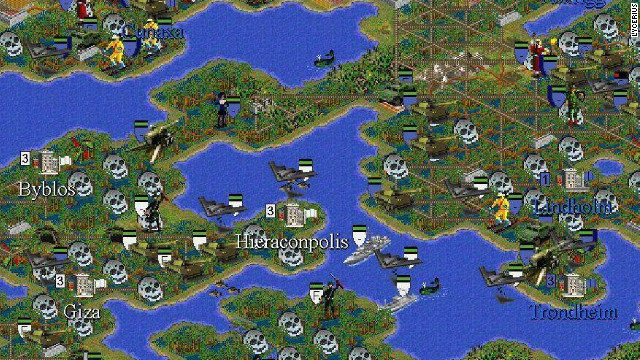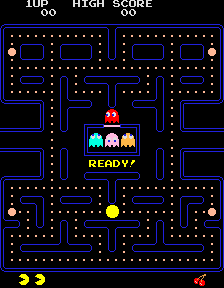My students recently mentioned an article about a man who played the same game of civilization for 10 years. Talk about addicting gameplay! This brings me to the question, what makes a game sticky? The answer seems to vary depending upon the genre.
For Social Games, stickiness is vital since the revenue model depends upon users returning frequently. Simply put, whenever a user goes back and plays, the more involved they are. This increases the opportunities to monetize, since a user who plays every day is much more likely to get to this point where they open their wallet, compared with those who visit once or twice a month never comes back. The key stickiness factor for social games, aside from being a great game, is the game's ability access to their friends via Social Media. Yet with such a reliance upon social media, the challenge for social games going forward remains how to deal with the constant changes in services of social media as has been seen in the myriad of Facebook updates to user terms and services.
For MMOs, stickiness boils down to community. The initial draw to a game largely revolves around the excitement and buzz of something new. Yet after the novelty of the game wears off, the user is no longer playing the game so much because they still find it fun, but simply because the user is more interested being a part of their circle of friends more than completing quests.
Of course, all sticky games have one thing in common: they are great games. According to Raph Koster, the mark of a truly good game is one that
teaches us everything it possibly can before we grow tired of playing.
This suggests that after 10 years of trying to bring peace to the world
in the face of opposition from war-minded AI opponents, the game still
had something to teach. So when designing for your game, remember that regardless of the platform, the first key to success begins with having something compelling to share with your audience.
Saturday, September 8, 2012
Thursday, August 30, 2012
Scholarship - Grace Hopper Celebration of Women in Computing 2012
USC
is sponsoring *full scholarships* for several USC undergraduate,
Masters, and PhD students to attend this conference. We sent
nineteen students last year (fully or partially funded by USC),
and we expect to be able to send at least sixteen this year.
Students selected to attend will receive financial support
sufficient to cover travel, conference fees, food and lodging.
This is a great opportunity for getting valuable career advice,
networking with other women, and finding out more about the
current technical contributions of women in the field, whether
you are industry- or academia-bound.
This year the Viterbi School is sponsoring a booth at the conference. Scholarship recipients will be expected to help staff the booth for four hours, as well as answer a survey about their experience at the conference after they return.
This year the Viterbi School is sponsoring a booth at the conference. Scholarship recipients will be expected to help staff the booth for four hours, as well as answer a survey about their experience at the conference after they return.
APPLICATION
PROCESS: if you are interested in attending and would like to
be considered for a scholarship please send us your resume and a
short paragraph on why you'd like to participate. If you
already have partial funding from another source(s), please
mention the details of that in your paragraph, because we will
take that into consideration (partial support enables us to send
more students from USC overall). Send your application to
Claire Bono -- bono@usc.edu
by NO LATER THAN Tuesday Sept. 4, 2012
Be
sure to include your NAME, USC ID, MAJOR, and DEGREE you are
working towards (e.g., BS, MS, PhD) in your message.
The
Grace Hopper Celebration of Women in Computing is a series of
conferences designed to bring the research and career interests
of women in computing to the forefront. Presenters are leaders
in their respective fields, representing industrial, academic
and government communities. Leading researchers present their
current work, while special sessions focus on the role of women
in today's technology fields, including computer science,
information technology, research and engineering.
Past
Grace Hopper Celebrations have resulted in collaborative
proposals, networking, mentoring, and increased visibility for
the contributions of women in computing.
For
more information please follow this link: http://gracehopper.org/
Wednesday, August 29, 2012
Understanding Pac-Man Ghost Behavior
The enemies in Pac-Man are known variously as "ghosts," "goblins," and "monsters". Despite the seemingly random nature of the enemies, their movements are strictly deterministic, which players have used to their advantage. In an interview, creator Toru Iwatani stated that he had designed each enemy with its own distinct personality in order to keep the game from becoming impossibly difficult or boring to play. More recently, Iwatani described the enemy behaviors in more detail at the 2011 Game Developers Conference. He stated that the red enemy chases Pac-Man, and the pink and blue enemies try to position themselves in front of Pac-Man's mouth. While he claimed that the orange enemy's behavior is random, a careful analysis of the game's code reveals that it actually chases Pac-Man most of the time, but also moves toward the lower-left corner of the maze when it gets too close to Pac-Man.
Subscribe to:
Posts (Atom)




